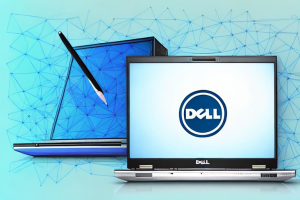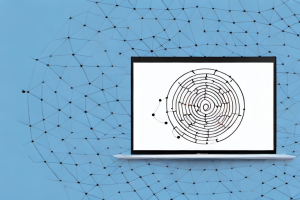How to fix a noisy fan on a Dell Latitude E7250
9 min read
A dell latitude e7250 laptop with a fan inside
If the fan on your Dell Latitude E7250 is making an excessive amount of noise, it can be incredibly frustrating, distracting, and even harmful to your device’s overall performance. Fortunately, it’s often possible to fix a noisy fan on your own without having to take your laptop to a professional repair service. Here’s everything you need to know about identifying the cause of the noise, what equipment you’ll need, and how to fix it step-by-step.
Identifying the Cause of Fan Noise on Dell Latitude E7250
The first step to fixing a noisy fan is understanding what’s causing it. The most common reason is a buildup of dust and debris inside your Dell Latitude E7250 Laptop’s fan and heat sink. Over time, this accumulation can lead to the fan blades becoming clogged and unable to spin as freely as they should. Additionally, the fan can become misaligned or disconnected from its bearings, leading to an unusual whirring or grinding sound. Finally, the issue could be caused by lubrication deficiency, which can cause dryness and lead to increased friction and noise during operation.
It’s important to note that a noisy fan can also be a sign of a more serious issue, such as a failing fan or a malfunctioning component. If you’ve tried cleaning the fan and it still makes noise, it’s best to seek professional help to diagnose and fix the problem. Ignoring a noisy fan can lead to overheating and damage to your laptop’s internal components, so it’s important to address the issue as soon as possible.
Understanding the Importance of Fixing a Noisy Fan on Dell Latitude E7250
If left unaddressed, a noisy fan can damage your Dell Latitude E7250’s internal components by not performing its crucial cooling functions effectively. Heat build-up can eventually lead to damage to the motherboard, graphics card, and other vital internal components, as well as reduce the overall lifespan of your computer. And as the fan’s noise escalates, it can also be a significant distraction and affect work productivity.
It is essential to address a noisy fan on your Dell Latitude E7250 promptly. One of the most common causes of a noisy fan is dust accumulation, which can obstruct the fan’s blades and reduce its efficiency. Regular cleaning of the fan and its surrounding areas can help prevent this issue. However, if the noise persists, it may indicate a more severe problem, such as a failing fan motor or a damaged fan blade. In such cases, it is best to seek professional assistance to avoid further damage to your computer.
Tools and Equipment Required to Fix a Noisy Fan on Dell Latitude E7250
You don’t need a lot of equipment to fix a noisy fan on a Dell Latitude E7250, but you should prepare yourself before getting started. Here’s what you’ll need:
- A clean, flat surface for disassembling your laptop
- A small Phillips-head screwdriver
- Compressed air can or a soft-bristled brush for dust and debris removal
- Thermal paste for heat sink lubrication (optional)
Before you begin fixing the noisy fan, it’s important to understand the root cause of the problem. In most cases, a noisy fan is caused by a buildup of dust and debris on the fan blades or within the laptop’s cooling system. However, it’s also possible that the fan itself is damaged and needs to be replaced.
If you’re unsure about the cause of the problem, it’s a good idea to consult with a professional before attempting any repairs. They can help you diagnose the issue and provide guidance on the best course of action.
Step-by-Step Guide to Disassembling Your Dell Latitude E7250 Laptop
Once you’ve prepared yourself with the necessary equipment and identified the cause of the noisy fan, it’s time to begin disassembling your Dell Latitude E7250 laptop. Please follow these steps:
- Unplug your laptop and remove the battery.
- Flip the laptop over and locate the screw holes on the back panel.
- Using your Phillips-head screwdriver, remove all the screws from the laptop’s back panel. Try to keep them organized and safe for later use.
- With the help of a plastic pry tool or your hands, gently pry out the edge of the back panel and detach it from the laptop.
- Use your Phillips-head screwdriver to remove the screws holding the fan assembly in place.
Once you have removed the screws holding the fan assembly in place, gently lift the fan assembly out of the laptop. Be careful not to damage any of the wires or components connected to the fan. You may need to use a plastic pry tool to help detach the fan assembly from the laptop’s motherboard. Once the fan assembly is removed, you can clean it or replace it with a new one if necessary.
Cleaning Your Dell Latitude E7250 Laptop’s Fan and Heat Sink
Gently clean the fan blades and heat sink fins with a soft brush or compressed air to remove dust and debris thoroughly. Be very careful not to damage or bend the fan blades or heat sink fins, as this can affect your laptop’s performance. Please try to keep the removed parts organized and safe for later reassembly.
It is recommended to clean your laptop’s fan and heat sink at least once every six months to ensure optimal performance and prevent overheating. Overheating can cause damage to your laptop’s internal components and reduce its lifespan.
If you notice that your laptop is running hotter than usual or the fan is making more noise than usual, it may be a sign that the fan and heat sink need cleaning. In some cases, you may need to replace the fan or heat sink if they are damaged or not functioning correctly.
Lubricating Your Dell Latitude E7250 Laptop’s Fan for Quieter Operation
If the fan is noisy because of a lack of lubrication, you can use thermal paste to reduce friction and wear to the fan bearings. Apply a small amount of thermal paste (less than the size of a pea) onto the fan bearings. You can spread it out evenly, giving it a thin layer for the best results.
It is important to note that before attempting to lubricate your laptop’s fan, you should first ensure that the noise is indeed caused by a lack of lubrication. If the noise persists even after lubrication, it may be an indication of a more serious issue with the fan or other components of the laptop.
Additionally, it is recommended that you seek professional assistance if you are not comfortable with opening up your laptop and performing the lubrication process yourself. This will ensure that the process is done correctly and without causing any damage to your laptop.
Reassembling Your Dell Latitude E7250 Laptop after Repairs
Follow the disassembly steps in reverse order to reassemble your Dell Latitude E7250 Laptop. Make sure all the screw holes are appropriately aligned, and the screws are appropriately and tightly screwed, but not too tight. Please take your time during this stage, and don’t rush the process.
It is important to note that some components may require additional care during reassembly. For example, the keyboard and touchpad cables should be carefully connected to their respective ports to avoid damage. Additionally, ensure that all connectors are properly seated and secured before closing the laptop. Once you have completed the reassembly, test the laptop to ensure that all components are functioning correctly before using it regularly.
Testing Your Dell Latitude E7250 Laptop’s Newly Repaired Fan for Noise Reduction
With everything reassembled, power on your Dell Latitude E7250 Laptop and run some stress tests. Check if you notice any noise reductions and make sure every component is functioning correctly. You can also monitor the temperature after fixing the fan to ensure the efficacy of the fix.
It is important to note that if you still hear noise coming from your laptop’s fan after the repair, it may be an indication of a more serious issue. In this case, it is recommended to seek professional help to avoid further damage to your device.
Additionally, to prevent future issues with your laptop’s fan, it is recommended to regularly clean the fan and vents to remove any dust or debris that may accumulate over time. This can help improve the performance of your laptop and extend its lifespan.
Common Mistakes to Avoid When Fixing a Noisy Fan on Your Dell Latitude E7250 Laptop
When fixing a noisy fan, it’s essential to be careful and avoid common mistakes that can end up doing more harm than good. Here are a few common mistakes you should avoid:
- Using steel tools instead of plastic pry tools and damaging the circuit board or other delicate parts of your laptop.
- Forgetting to unplug and remove the battery before starting the disassembly process.
- Putting too much thermal paste during assembly as it can lead to overheating and other issues.
Another common mistake to avoid when fixing a noisy fan on your Dell Latitude E7250 laptop is not cleaning the fan properly. Dust and debris can accumulate on the fan blades, causing it to make noise. It’s important to clean the fan thoroughly with a soft brush or compressed air to remove any buildup. Failure to do so can result in the fan continuing to make noise even after the repair.
Troubleshooting Tips for Persistent Fan Noise Issues on Your Dell Latitude E7250 Laptop
If the fan is still making noise, you can troubleshoot the issue by:
- Checking your system’s temperature using diagnostic tools that can help you identify areas with excessive heat and the possible cause of noise.
- Updating your system’s BIOS and drivers, which can repair software bugs that cause fan noise.
- Checking your power settings as some power settings allow the computer to minimize fan speed and reduce noise.
- Replacing the fan with a new one, but this should be a last resort option.
Another possible solution is to clean the fan and the air vents. Dust and debris can accumulate over time and cause the fan to work harder, resulting in more noise. You can use compressed air or a soft brush to clean the fan and vents.
If none of the above solutions work, it may be necessary to contact Dell technical support for further assistance. They can help diagnose the issue and provide additional solutions or repair options if needed.
Long-Term Maintenance Tips for Keeping Your Dell Latitude E7250 Laptop’s Fan Quiet
Finally, if you want to keep your Dell Latitude E7250 laptop’s fan quiet in the long term, there are a few key best practices to adopt:
- Regularly clean your laptop’s air vents, the interior of your laptop, and the fan assembly to prevent dust and debris accumulation.
- Avoid placing your laptop on soft or uneven surfaces as they can obstruct airflow and impact performance.
- Limit the usage of processor-intensive applications as they can increase heat build-up and overwork the fan.
- Always keep your laptop on a flat surface to allow proper ventilation.
- Make sure to keep your computer’s software updated and remove any bloatware or unnecessary programs that can increase CPU load.
Fixing a noisy fan on your Dell Latitude E7250 Laptop is a necessary process to keep your computer running smoothly and reliably. By following these steps and taking proper care to maintain your laptop regularly, you can ensure your computer remains quietly efficient for many years to come.
Another important tip to keep in mind is to avoid exposing your laptop to extreme temperatures. High temperatures can cause the fan to work harder, leading to increased noise levels. Similarly, exposing your laptop to very low temperatures can cause condensation to form inside the device, which can damage the internal components.
Additionally, it’s a good idea to invest in a laptop cooling pad. These pads are designed to improve airflow around your laptop, which can help to reduce the workload on the fan and keep your computer running quietly. Some cooling pads even come with built-in fans that can provide additional cooling power.


